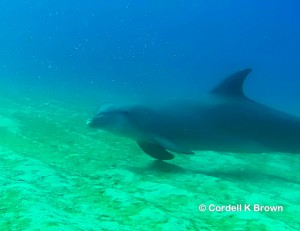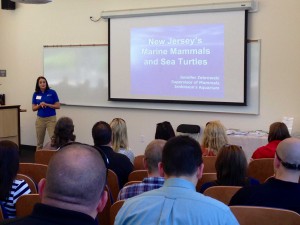Marine Mammal & Sea Turtle Week (Part 1 of a 5-part series)
With Memorial Day Weekend upon us, summer is unofficially here for New Jerseyans. That means plenty of tourists enjoying shore, sand, surf, and sun – but it also means other types of annual summer visitors to our coast: bottlenose dolphins, sea turtles, and whales. However, what may be inspiring sightings from a healthy distance can become tragic encounters when marine animals become stranded or entangled in nets.
This story marks the first of five blog stories spotlighting New Jersey’s marine mammals and sea turtles – and educating people how to help animals in need, rather than make a bad situation worse.
Part 2, on Tuesday, will feature a Question-and-Answer on the dolphin mortality event with NOAA’s Mendy Garron. Part 3, on Wednesday, will look at how people can safely help stranded wildlife. Part 4, on Thursday, will investigate the fascinating condition of cold-stunned sea turtles. And Part 5, on Friday, will reveal the importance of reporting sightings – both for live or dead marine mammals.
MARINE MAMMAL & SEA TURTLE WEEK: Dolphin die-off kills over 1,000 bottlenose dolphins along Atlantic coast
By David Wheeler, Executive Director of Conserve Wildlife Foundation of New Jersey
At least 136 bottlenose dolphins became stranded in New Jersey over the past year. Most of the strandings were fatal, and many dolphins showed lesions and other infections. Over 1,200 dolphins have stranded along the entire Eastern seaboard – a situation bleak enough that the National Oceanic and Atmospheric Association (NOAA) declared an Unusual Mortality Event.

The cause is Cetacean morbillivirus. About half of coastal migratory bottlenose dolphins are affected, leading to this stock’s federal classification as ‘Depleted’ under the Marine Mammal Protection Act. Bottlenose dolphins were already considered species of special concern in New Jersey, and this only further threatens their population.
In stark contrast with the 136 dolphins stranded in New Jersey since last July 1, the average number of strandings in the state for a given year is 10.
The last major morbillivirus mortality event among bottlenose dolphins occurred in 1987-88, which ultimately helped lead the U.S. Congress to establish the Marine Mammal Health and Stranding Response Program.
The dolphin virus was among the issues discussed atConserve Wildlife Foundation’s inaugural marine mammal stranding workshops last month at Monmouth University and Richard Stockton College.
Speakers at our recent stranding response workshops led interactive discussions to educate first responders on how to handle marine mammal and sea turtle strandings. Jen Zebrowski from Jenkinson’s Aquarium educated responders on how to identify some 13 species of marine mammals and 5 sea turtles they might encounter on the New Jersey coast. Mendy Garron, Kate Sampson and Scott Doyle from NOAA explained what a responder should do once they encounter the animal, how to make the situation safe, and the legal obligations facing first responders with a stranding.
Now we enter this summer hoping that cetacean morbillivirus will not claim nearly as many dolphins this year. Keep your fingers crossed!

Helpful Links:
Bottlenose Dolphin Field Guide
NOAA Unusual Mortality Event page for Bottlenose Dolphin Morbillivirus
NOAA Marine Mammal Stranding page
Marine Mammal Stranding Center, Brigantine, New Jersey
Discover more from Conserve Wildlife Foundation of NJ
Subscribe to get the latest posts sent to your email.